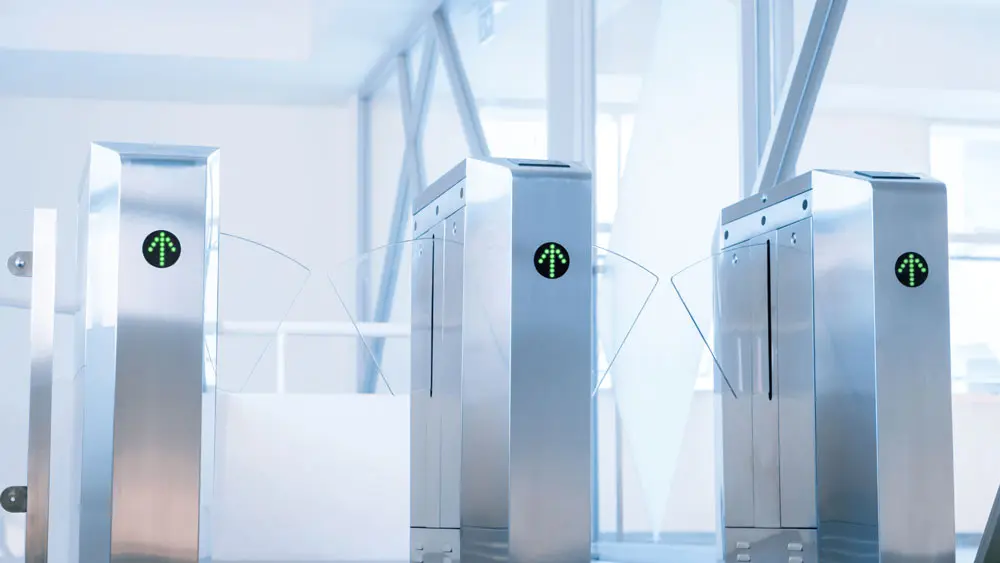Unified smart card (one card)
All you need to know about smart cards
Technological development has contributed to improving people’s lifestyles every day, providing many conveniences, security, and privacy. The smallest technologies have become the basis of everything we use in our lives, and perhaps the most important thing that can be talked about in this field is the concept of smart cards.
Smart cards keep a lot of information and can be tailored to fit the need. They are also used to complete many tasks, such as those related to ATMs, enterprise entrances, smart cards for university and college employees, smartphones, etc.
Therefore, in this article, we will learn about the concept of smart cards, and we will get deep insights into the products offered by Al Maalim International Co. for technology in this industry.
The concept of smart cards
A smart card is defined as a device that includes an embedded integrated circuit chip (ICC). The smart card connects to a reader with direct physical contact or with a remote contactless radio frequency interface. Smart cards have the unique ability to store large amounts of data, as well as carry out their own on-card functions (e.g., encryption and mutual authentication), and interact intelligently with a smart card reader.
In general, smart cards are available in a variety of forms, such as plastic cards and subscriber identity modules (SIMs) used in GSM mobile phones.
As a result, smart cards are widely used around the world, for a variety of secure identity applications, citizen ID documents, and e-passports. Besides healthcare, payment, and credit applications, smart cards also is an essential tool for telecommunication applications.
Types of smart cards
Smart cards fall into four basic categories:
- Direct Physical Contact Cards: This category of smart cards must be inserted into a smart card reader, with a direct connection to a conductive contact plate on the surface of the card. Transmission of data and card status takes place over this direct physical contact point.
- Contactless Cards: These cards require only close proximity to a reader. The basic mechanism of these cards is based on both the reader and the card communicating using radio frequencies (RF) over this contactless link. This type of smart card also derives power for the internal chip from these electromagnetic signals. It should be noted that this type is ideal for applications such as building entry and payment, security gates, and parking lots.
- Dual-interface Technology Cards: These cards have a single chip with both contact and contactless interfaces. With dual-interface cards, it is possible to access the same chip using either a contact or contactless interface with a very high level of security. Sometimes we can provide the enterprise with cards with three different techniques, according to the needs of the project.
- Hybrid Smart Cards: This category of smart cards has an embedded processor chip, which can be accessed through a contact reader and an RFID chip for proximity connection, or what is known as Radio Frequency Identification.
Choosing the appropriate category, is subject to several factors, such as the needs of the project and the infrastructure of the establishment, in addition to the joint implementation strategies.
Types of smart cards provided by Al Maalim International Company
At Al Maalim International for Technology Company, provide a variety of types of smart cards, so that you can use them in your various businesses with convenience, safety, and high professionalism.
We will get a deep insight into the most prominent types of smart cards that we offer at Al Maalim International Company, to our customers all over the world.
- Mifare Cards
Mifare cards are contactless technology that was first introduced in 1994 and patented by Philips. It is one of the most widely used and popular smart cards for storing data in an organized and optimal way, along with providing access control.
Several storage spaces are available for this type of card.
Since MIFARE cards belong to the category of contactless smart cards, they react once a card is within the magnetic field of a reader. MIFARE cards allow for multiple application uses that other cards do not.
MIFARE cards also have several key benefits besides allowing multiple application uses. It guarantees a high level of encryption that is really difficult to clone, cards do not need to be physically inserted into a reader, they only need to be placed close within range of a card reader, and finally each individual MIFARE product has its own serial number.
As for the areas of use of MIFARE cards, there are many, most notably staff ID cards, cashless payments, tourist cards, campus cards, mobile ticketing, and library cards.
- Ultra-high frequency standard cards (UHF)
The UHF card is one of the most prominent smart cards that are mainly used in logistics management, as well as in data collection and parking. This is due to several advantages and characteristics provided by UHF cards.
The UHF card operates at a higher frequency between 860 to 960MHz than standard Proximity Cards (125kHz), with a much longer reading distance of approximately 3-8m.
- HID iClass cards
Since security is the top concern of customers and users, HID iClass cards are mainly used for security and access control purposes. HID iClass smart cards communicate with the reader, via data that is sent between the card and the reader, which is basically just a string of numbers that corresponds to the card number.
The method of data transfer is no different from other cards, except that what is unique about the HID iClass card is that every time data is transmitted between the card and the reader, it is encrypted using a secure algorithm. This means that each time the card sends the signal to the card reader, it’s using a different code for authentication.
The fields of use of HID iClass smart cards are diverse, including biometric authentication, cashless vending, and public transportation ticketing.
- DESFire Cards
It is a smart card based on the open global standard for both contactless interface and encryption, this card encrypts transmission data by DES3 hardware encryption engine, providing a much higher level of security compared to other standard RFID cards and has the advantage of large memory as it can reach to more than 512 KB. Based on the feature of high-security level, DESFire smart card is very suitable for smart payment cards.
Why do I need specialists to complete the special cards in my business?
We have seen the importance of the smart card that you use in your business to have a high level of security along with a high quality of work. This is what we offer to our clients at Al Maalim International Company, through a specialized and professional team to provide a variety of smart cards.
Cards can be printed or unprinted, single, or multi-technology depending on requirements. In addition, cards can contain information such as personal profiles, medical summaries, points system, profile pictures, and decimal biometric information.
As for the areas of using the smart cards that we offer, they are diverse, and they include the following services and applications:
- Access to building gates or parking gates
- Access to networks and personal computers (PCs)
- Access to server rooms and control rooms
- Covenant systems in libraries and warehouses
- Cards for health clubs and in-house restaurants
- Personal identity verification (PIV) at entry, exit, or at tests





